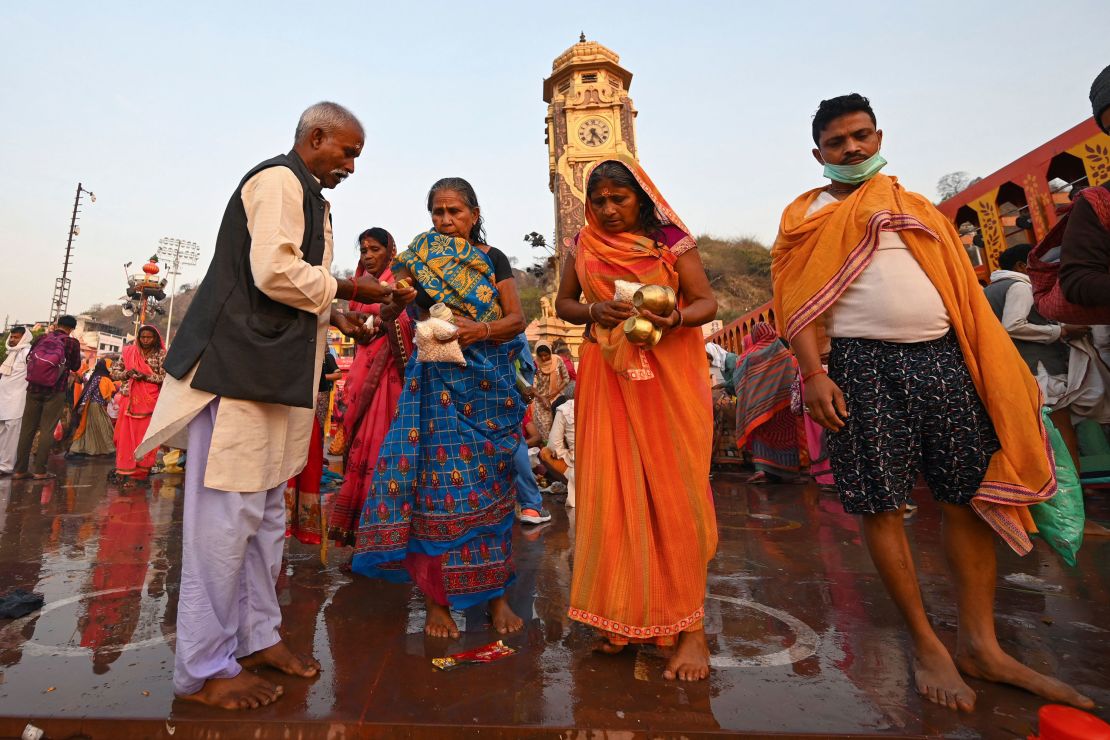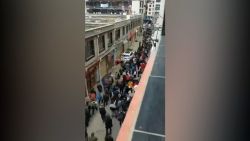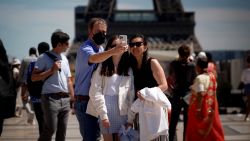Hindu devotees packed the streets of Haridwar, in northern India, on Monday for the largest religious pilgrimage on Earth, in scenes that defied social distancing rules just as Covid-19 infections soared in the country.
As many as 5 million visitors were expected to descend on the city Monday – an auspicious day in the ongoing Kumbh Mela religious festival, which was delayed this year due to the coronavirus pandemic.
At the festival, devotees wash away their sins in the river’s sacred waters, which are believed to turn into “amrita” – the nectar of immortality – on auspicious days like Monday.
At least 650,000 people had already taken a dip in the river by early Monday, according to police Insp. Gen. Sanjay Gunjyal. Throughout the day, there will be an estimated 11,000 to 18,000 people in the water at any time, spread across the 15 main riverbanks, said Mukesh Thakur, a senior police official.

The massive crowds are causing concern as India struggles to contain a worrying second wave, with cases rising dramatically every day.
“Social distancing is proving very difficult,” Gunjyal said. “If we try to enforce it then it can lead to a stampede – that’s why, despite wanting to, we are unable to implement social distancing at these riverbanks.”
He added authorities were “continually appealing to people to wear masks and follow Covid-appropriate behavior.”
India reported 168,912 new cases Monday, its highest single-day figure for the sixth consecutive day, according to data from the country’s Ministry of Health.
The second wave, which began in March and has rapidly accelerated in the past week, has far surpassed India’s first wave last year, when at its peak in September daily cases passed 97,000.
Trying to contain the risk
In Haridwar, Uttarakhand state, authorities have introduced measures to try to contain the risk during Kumbh Mela.
That includes artificial intelligence cameras at various riverbanks and 15,000 security personnel deployed to handle crowd control, Thakur said.
“The camera has sensors which alert us when the number of cars in parking areas or foot traffic crosses a certain threshold and we can communicate with people on ground to start diverting crowds,” Thakur said. “The cameras also detect if people are not wearing masks and the officers on ground immediately issue tickets to those people.”
However, Gunjyal said it was impossibleto issue tickets to everyone on Monday due to the sheer size of the crowds, with photographs showing plenty of people defying mask-wearing rules.
Other restrictions were aimed at preventing those carrying the virus from reaching the festival.
Before entering Haridwar, all those attending the festival had to register online, and provide a medical certificate confirming their health status. Visitors coming from states with surging infections had to provide negative Covid-19 test results, and checkpoints were set up at transport hubs to carry out random testing on people passing through.
Still, all these restrictions might not be enough to prevent the virus spreading between the masses of people eating, washing, and praying together in close proximity. Haridwar is already starting to see infections surge; 2,209 cases have been reported in the city since the festival began on April 1, according to data from the Uttarakhand state health department.
“The second wave of coronavirus is ongoing in the country … in Uttarakhand as well, the impact of (Covid) has risen, more than 500 cases have started coming in daily,” said Uttarakhand’s police director Ashok Kumar earlier this month, urging people to follow safety guidelines.
“Let us not let it get to a point where we again need a lockdown, as that is harmful to everyone.”






















